 Petzlover
Petzlover Nebelung is originated from United States but Russian Blue is originated from Russia. Both Nebelung and Russian Blue are of same weight. Both Nebelung and Russian Blue has almost same life span. Both Nebelung and Russian Blue has same litter size. Both Nebelung and Russian Blue requires Low Maintenance.
Nebelung is originated from United States but Russian Blue is originated from Russia. Both Nebelung and Russian Blue are of same weight. Both Nebelung and Russian Blue has almost same life span. Both Nebelung and Russian Blue has same litter size. Both Nebelung and Russian Blue requires Low Maintenance.
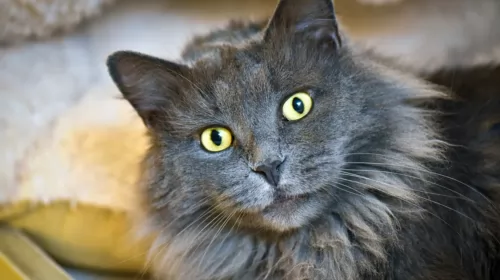 The Nebelung is a new breed of cat originating in the USA. It is a close relative of the short-haired Russian Blue.
The Nebelung is a new breed of cat originating in the USA. It is a close relative of the short-haired Russian Blue.
The name Nebelung means 'creature of the mist' in German. This is because of the cat’s beautiful silver-blue coat.
It was in the mid-1980s that Cora Cobb had a domestic shorthair cat mated with a Russian Blue, with one kitten from the litter having long, blue hair. She started a breeding program and in 1987 the Nebelung was given status as an entirely new breed by The International Cat Association as well as the American Cat Fanciers Association.
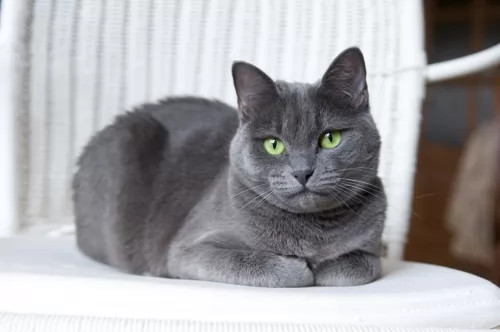 It is believed that this beautiful cat originates from Russia, and more specifically the Archangel Isles.
It is believed that this beautiful cat originates from Russia, and more specifically the Archangel Isles.
It is also thought that these cats descended from cats that were kept by the Russian Czars and that they arrived in England and Northern Europe during the 1860s. It appeared in cat shows and by 1912 it was given its own classification.
The cat was also introduced to the United States in the early 1900s and today it is a popular domesticated pet.
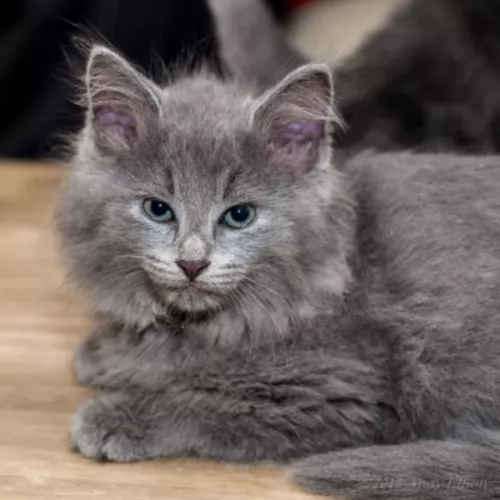 The beautiful Nebelung is a rare domestic medium-sized cat with a long muscled body and long legs. They weigh between 3 and 6kg. The oval-shaped eyes are green or a yellow-green color and the eyes are large and pointed. The coat of the cat is long and thick with an undercoat and grey in color with the males and some females having a ruff round the neck.
The beautiful Nebelung is a rare domestic medium-sized cat with a long muscled body and long legs. They weigh between 3 and 6kg. The oval-shaped eyes are green or a yellow-green color and the eyes are large and pointed. The coat of the cat is long and thick with an undercoat and grey in color with the males and some females having a ruff round the neck.
The Nebelung is a lively, playful cat that is good-natured and loves to be around his human family. People who have owned them say they behave a lot like dogs. It means you can have him trained to walk on a leash.
He is somewhat aloof with strangers. He is a gentle cat and very intelligent, forming tight bonds with some special members of his human family. They love to be petted and stroked by this favorite human being.
The cat also communicates well. They like their litter box kept nice and clean and they can be quite finicky when it comes to their food.
Because of their playfulness, make sure you have lots of puzzle toys for him. They’re cats that like things to remain the same – no sudden changes for them as they become stressful. Because of their quiet natures, they don’t relish the idea of wild, undisciplined children and would prefer to live in a home with a few adults,
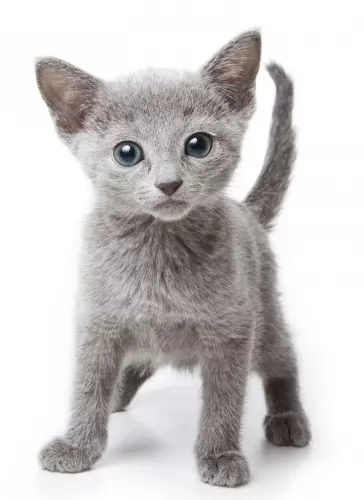 The medium-sized Russian blue cat is slender, strong, and muscular with long legs. He can weigh between 3 and 6kg.
The medium-sized Russian blue cat is slender, strong, and muscular with long legs. He can weigh between 3 and 6kg.
He has a beautiful blue, soft double coat that is short and thick. The coat is an even color with silver tips. What is an attractive feature of this cat too is that his double coat doesn’t shed much. The cat has a triangular-shaped head with yellow to green eyes.
The Russian Blue is such an amicable, sweet-tempered cat that likes nothing more than to be in the company of his human owners, He is calm and independent. They do well living with their human families but they do tend to form a deep bond with that one special person.
He will even follow his owner everywhere and is a loving, loyal companion. The Russian Blue is a social cat but also enjoys some quiet time out just to chill. He also isn’t too fond of visitors and may run away and hide if the occasion becomes too large and noisy.
This is a cat that will miss you when you’re at work all day but he is able to quietly wait for your arrival back home. Then he will appreciate some playtime.
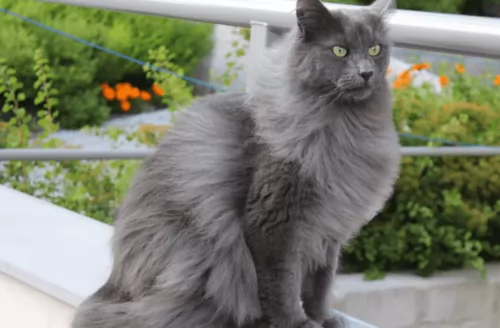 The Nebelung is a gentle, quiet cat that simply wants to live in harmony with the human family he loves.
The Nebelung is a gentle, quiet cat that simply wants to live in harmony with the human family he loves.
He prefers a quiet, consistent kind of lifestyle. He is active, social, and fun around them but is reserved with strangers.
He is a loyal and loving cat and can become dejected if he doesn’t receive the same amount of love and attention that he craves and which he is so willing to give.
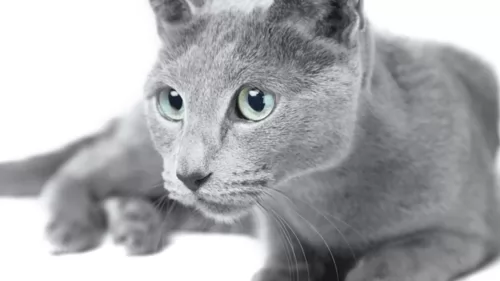 Your Russian Blue is such an intelligent cat and for this reason, when you bring one into your home, you’ll need to provide him with lots of stimulating toys and fun play times.
Your Russian Blue is such an intelligent cat and for this reason, when you bring one into your home, you’ll need to provide him with lots of stimulating toys and fun play times.
This is also a low maintenance cat and a brush once a week will be all that is required.
These are cats that love their mealtimes and you’ll want to work out a special eating program to ensure he gets all the nutrition he needs without over-eating.
Respond with lots of love and attention to your vocal Russian Blue, and you’ll soon see what a precious jewel this cat is as a companion and friend.
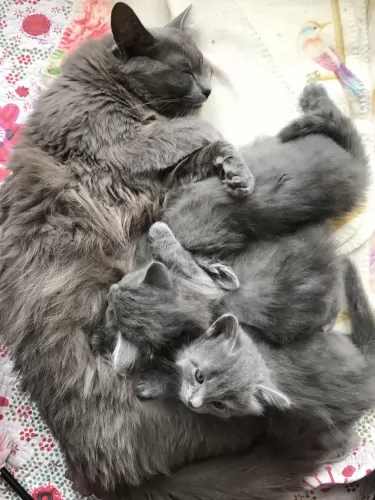 These beautiful cats don’t have many health issues. They are generally healthy cats.
These beautiful cats don’t have many health issues. They are generally healthy cats.
Don’t allow your cat to become overweight as this can bring on a host of health conditions. There was a time when cats didn’t get much older than 10 years of age, but with advancements in good nutrition and good veterinary care, a cat can reach 15 to 20 years of age.
Certainly, as your beloved pet starts to move into his senior years, he will face aging problems. Aging cats are susceptible to faltering vision, arthritis, hearing loss, thyroid problems gum and teeth disease, diabetes, incontinence, and even dementia.
Remember to continue feeding your senior cat the best quality cat food there is.
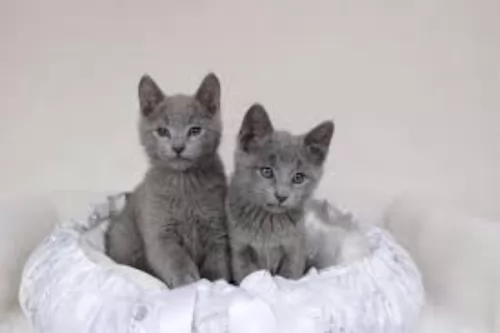 Because the Russian Blue is a naturally occurring breed, they are fairly healthy cats. Watch out for obesity and urinary tract infections with your cat.
Because the Russian Blue is a naturally occurring breed, they are fairly healthy cats. Watch out for obesity and urinary tract infections with your cat.
Obesity shortens a cat’s life. It puts extra pressure on the cat’s joints and it makes them more likely to develop disease. Then again, it is dangerous to suddenly put your obese cat on a strict diet so that he loses weight too quickly.
Your cat requires a gradual decrease in body weight. If you’re worried about your cat’s weight, rather speak to a veterinary surgeon who can explain to you and also draw up a weight loss program for your cat.
Remember too, that cats are carnivores and they simply have to have meat in their diet. Commercially manufactured cat foods of the highest quality are high in protein and low in carbohydrates.
Feline lower urinary tract disease is no joke for a cat. This disease affects your pet’s lower urinary tract – the bladder. Causes include bladder stones or bladder infections and inflammation in the urinary bladder.
You may notice your cat battling to urinate. Your cat will also no doubt cry out while trying to urinate and this is because the process is so painful. There may also be blood in the urine.
You may notice that your cat isn’t using his litter box but urinating elsewhere. Your cat will need to get to the vet as soon as possible. It may not be a life-threatening disease but it can be highly uncomfortable for your cat.
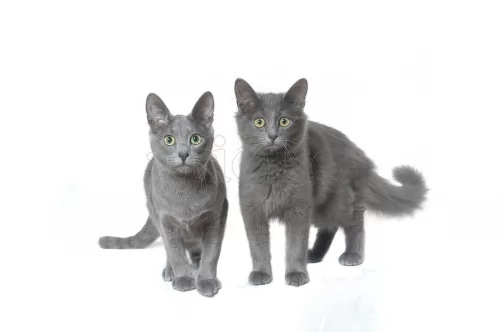 This cat, as a carnivore, should be fed a high- quality cat food that is high in protein. The poorer quality foods won’t have the right mix of vitamins and minerals – so important for your pet.
This cat, as a carnivore, should be fed a high- quality cat food that is high in protein. The poorer quality foods won’t have the right mix of vitamins and minerals – so important for your pet.
These inferior foods often lack the right nutrients and can make your cat sick. Make sure you give your cat a top protein diet with ingredients that must have taurine, an important amino acid.
The Nebelung has a long, double coat and even though the cat isn’t a heavy shedder, it will require a brush every week to prevent the coat from becoming tangled.
Make sure you have everything you need for welcoming a cat into your home. He will need food and water bowls, warm, soft bed, litter box, climbing tree, scratching post, collar, grooming accessories, and a cat-carrying box for when he needs to go to the vet.
Ensure you take your pet to the vet as soon as he shows signs of illness. There are some terrible cat illnesses and they can cause a lot of discomfort and pain for your furry friend.
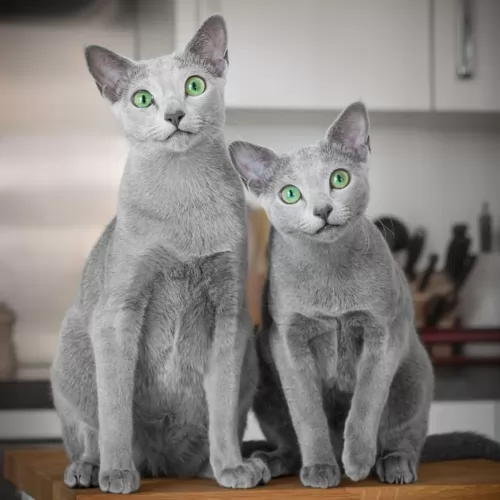 The Russian Blue’s beautiful blue coat is short and thick and will do well with a brush once a week. The cat just thrives on the attention during brush time too.
The Russian Blue’s beautiful blue coat is short and thick and will do well with a brush once a week. The cat just thrives on the attention during brush time too.
Trim your Russian blue’s nails regularly.
Provide your cat with everything he needs to make his life pleasant. Food and water bowls, a litter box, a collar and tag, a nice soft bed, grooming accessories, climbing tree, and a scratching post.
Make sure he has his cat vaccines and is treated for parasites.